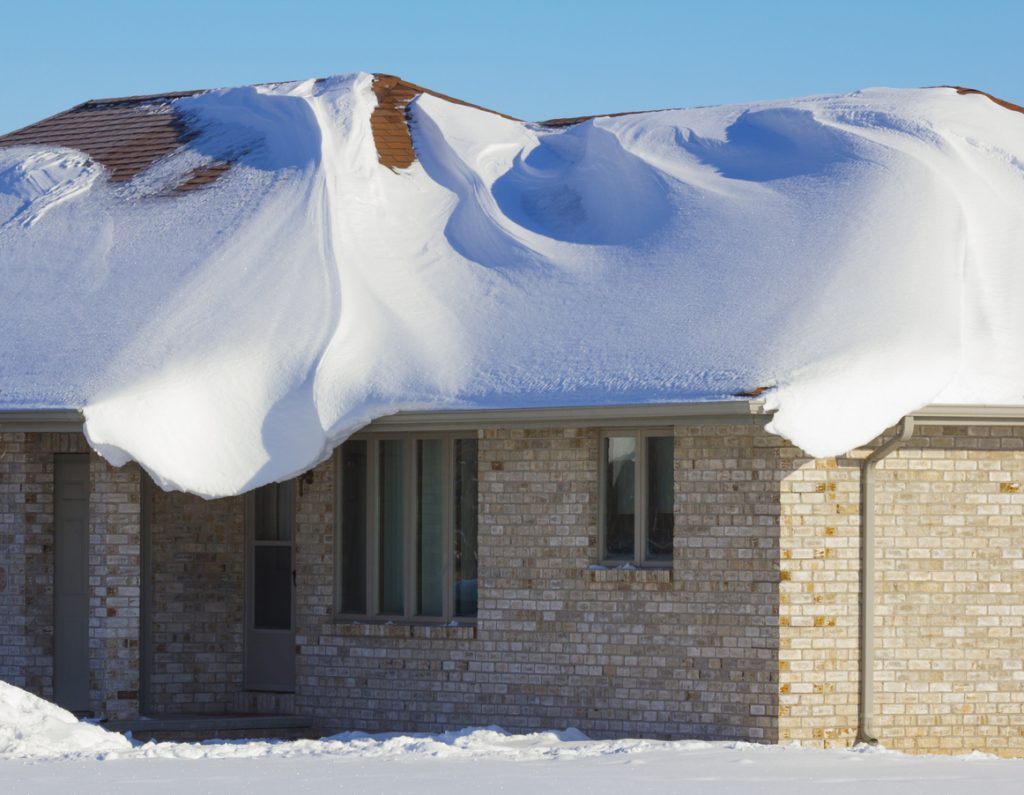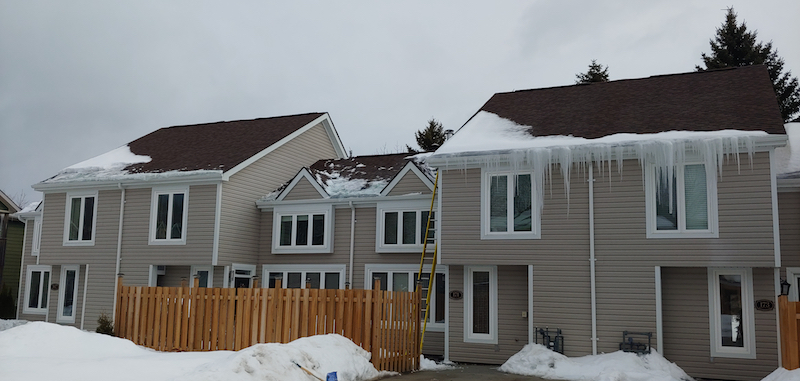Winter can be a challenging season for roofs, and as the temperature drops, so does the onslaught of myths surrounding winter roof care. It’s time to separate fact from fiction and debunk common misconceptions to ensure your roof remains resilient throughout the colder months. Ainger Roofing, a roofing company in Collingwood, will unravel the truth behind some prevalent roofing myths.

Myth 1: Snow on the Roof is Harmless
Fact: While a light dusting of snow might not be cause for concern, heavy accumulations can pose a threat.
Excessive snow can lead to structural strain, especially if your roof is aging or has pre-existing issues. The weight of snow can compromise your roof’s integrity, potentially causing leaks or even structural damage. It’s advisable to safely remove heavy snow, especially in regions prone to significant snowfall.
Myth 2: Ice Dams Are Inevitable
Fact: Ice dams are not inevitable, and preventative measures can significantly reduce their occurrence.
Ice dams form when warm air escapes into the attic, melting snow that then refreezes at the roof’s edge. Proper insulation and ventilation in the attic can minimize temperature variations, preventing ice dam formation. Regularly clearing gutters of debris also helps maintain proper water flow and reduces the likelihood of ice dams.
Myth 3: Roofs Don’t Need Ventilation in Winter
Fact: Proper ventilation is crucial year-round, including during winter.
Inadequate ventilation in winter can lead to moisture buildup in the attic. This moisture can condense and contribute to issues like mold growth, insulation damage, and even structural damage over time. Ensuring your attic has proper ventilation helps maintain a consistent temperature and prevents moisture-related problems.
Myth 4: Roof Repairs Should Only Be Done in Warmer Months
Fact: Roof repairs can be conducted in winter, and addressing issues promptly is essential.
Waiting until warmer weather to address roofing problems can exacerbate existing issues. Many roofing materials can be effectively repaired or replaced in colder temperatures. Professional roofers are equipped to handle winter conditions, ensuring your roof is in optimal condition when you need it most.
Myth 5: Sunshine Means No Roofing Concerns
Fact: Winter sunshine doesn’t mean your roof is in the clear.
While sunlight can contribute to melting snow and ice, it doesn’t eliminate the risk of issues like ice dams. Additionally, rapid temperature fluctuations can lead to freeze-thaw cycles, potentially causing roofing materials to contract and expand, leading to damage over time. Regular inspections are crucial, even on sunny winter days.
Myth 6: New Roofs Are Immune to Winter Issues
Fact: Even new roofs require attention and care during winter.
While a new roof may be in prime condition, it’s not immune to the challenges posed by winter weather. Regular inspections, especially after heavy snowfall or extreme weather events, help catch any issues early and ensure your new roof remains in top-notch condition.
Conclusion: Empowering Winter Roof Care with Knowledge
As winter unfolds, separating roofing fact from fiction is vital for maintaining a secure and resilient home. Roofers in Collingwood say that debunking these common myths empowers homeowners to take proactive measures, ensuring their roofs withstand the winter elements. By understanding the truths behind these myths, you can navigate the winter season confidently, safeguarding your home against potential roofing challenges.
Roofing Myths Debunked: Separating Fact from Fiction in Winter Roof Care
Winter can be a challenging season for roofs, and as the temperature drops, so does the onslaught of myths surrounding winter roof care. It’s time to separate fact from fiction and debunk common misconceptions to ensure your roof remains resilient throughout the colder months. Ainger Roofing, a roofing company in Collingwood, will unravel the truth behind some prevalent roofing myths.
Myth 1: Snow on the Roof is Harmless
Fact: While a light dusting of snow might not be cause for concern, heavy accumulations can pose a threat.
Excessive snow can lead to structural strain, especially if your roof is aging or has pre-existing issues. The weight of snow can compromise your roof’s integrity, potentially causing leaks or even structural damage. It’s advisable to safely remove heavy snow, especially in regions prone to significant snowfall.
Myth 2: Ice Dams Are Inevitable
Fact: Ice dams are not inevitable, and preventative measures can significantly reduce their occurrence.
Ice dams form when warm air escapes into the attic, melting snow that then refreezes at the roof’s edge. Proper insulation and ventilation in the attic can minimize temperature variations, preventing ice dam formation. Regularly clearing gutters of debris also helps maintain proper water flow and reduces the likelihood of ice dams.
Myth 3: Roofs Don’t Need Ventilation in Winter
Fact: Proper ventilation is crucial year-round, including during winter.
Inadequate ventilation in winter can lead to moisture buildup in the attic. This moisture can condense and contribute to issues like mold growth, insulation damage, and even structural damage over time. Ensuring your attic has proper ventilation helps maintain a consistent temperature and prevents moisture-related problems.
Myth 4: Roof Repairs Should Only Be Done in Warmer Months
Fact: Roof repairs can be conducted in winter, and addressing issues promptly is essential.
Waiting until warmer weather to address roofing problems can exacerbate existing issues. Many roofing materials can be effectively repaired or replaced in colder temperatures. Professional roofers are equipped to handle winter conditions, ensuring your roof is in optimal condition when you need it most.
Myth 5: Sunshine Means No Roofing Concerns
Fact: Winter sunshine doesn’t mean your roof is in the clear.
While sunlight can contribute to melting snow and ice, it doesn’t eliminate the risk of issues like ice dams. Additionally, rapid temperature fluctuations can lead to freeze-thaw cycles, potentially causing roofing materials to contract and expand, leading to damage over time. Regular inspections are crucial, even on sunny winter days.
Myth 6: New Roofs Are Immune to Winter Issues
Fact: Even new roofs require attention and care during winter.
While a new roof may be in prime condition, it’s not immune to the challenges posed by winter weather. Regular inspections, especially after heavy snowfall or extreme weather events, help catch any issues early and ensure your new roof remains in top-notch condition.
Conclusion: Empowering Winter Roof Care with Knowledge
As winter unfolds, separating roofing fact from fiction is vital for maintaining a secure and resilient home. Roofers in Collingwood say that debunking these common myths empowers homeowners to take proactive measures, ensuring their roofs withstand the winter elements. By understanding the truths behind these myths, you can navigate the winter season confidently, safeguarding your home against potential roofing challenges.

